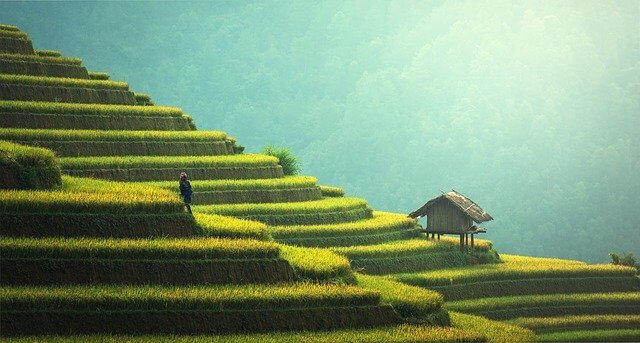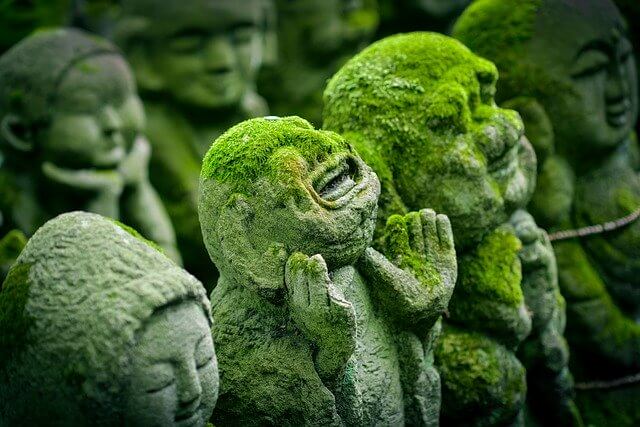Asia is the continent with the largest area and population on the planet. Its surface area is 44 million km2, that is to say, 29.45% of the surface land surface (not covered by water).
Its population is 61% of the world population and it is also the continent with the highest population density. Approximately 70% of the world’s births occur on this continent.
It differs from Europe for cultural reasons, but from the geographical point of view, Europe and Asia form a continent called Eurasia. It is also physically linked to Africa by the Suez Canal.

Characteristics Of Asia
1. Location and Limits
It is located in the eastern part of the Northern Hemisphere. Limited with:
- North: Arctic Ocean.
- South: Indian Ocean.
- West: Ural Mountains
- East: Pacific Ocean
2. Geology
Asia, Europe and Africa form a geologically indivisible territory, sharing a continental shelf. It is the Eurasian tectonic plate, on which most of Europe and Asia settle. This tectonic plate is located north of the Arabian plate and the Indian plate. On the other hand, Siberia, which is part of Asia, sits partially on the North American plate.
3. Relief
Asia is mainly a large plateau surrounded by mountain ranges. To the North its plains extend to the Arctic Oceans, while to the south it forms three large peninsulas. The central plateau is called Pamir, with an average height of 3,600 meters above sea level, which is why it is called “Roof of the World”. Southeast of Pamir is the Tibet Plateau, which is the largest and highest (5,000 m.s.n.) in the world.

4. Hydrography
- North Slope: the extensive rivers Obvi (4,100 km long), Yenisey (4,750 km.) And Lena (4,270 km.) Flow into the Glacial Ocean. These are Siberian rivers, which arise from a more southerly area than their mouths, and therefore of higher temperatures. This is why the mouth usually freezes while water continues to flow from its sources, causing flooding. The Amur, Sikiang, Song-ka and Mekong rivers flow into the Pacific Ocean.
- South Slope: in the Indian Ocean the Ganges and Indus rivers, with an approximate length of 3000 km, flow into a delta shape. The Tigris (2,000 km) and Euphrates (2,700 km) rivers are born in the Armenian plateau and combine into a single river that flows into the Persian Gulf. There are numerous inland basins with mouths in lakes. In the Asian steppe there are many saltwater lakes, such as the Caspian, Ara, Baljash and Baikal lakes.
5. Countries of greatest extension and population
- Russia: 125,246 km2. More than 146 million inhabitants
- China: 9,640,821 km2. More than 1.322 million inhabitants
- Indonesia: 1,919,440 km2. More than 230 million inhabitants.
- India: 3,287,263 km2. More than 1,147 million inhabitants
- Japan: 377,835 km2. More than 127 million inhabitants.
6. Demography
The current population of Asia is estimated at more than 4,200 million inhabitants, which are concentrated mainly on the shores of the China Sea and the Hindustani peninsula. In these regions, the population density reaches 1,000 inhabitants per square kilometer.
There is a great variety of ethnic groups (Malays, Arabs, Armenians, Persians, Jews, Russians, etc.). In most countries, men are more than women. However, there are countries where the opposite occurs (Japan, Vietnam, Sri Lanka, Armenia, Israel, Russia, among others).

7. Languages
There are more than 40 official languages in Asia. The most common language is Arabic, as it is the official or co-official language in 12 countries. Among the other languages are Mandarin, Hindi, Cantonese Chinese and Urdu.
8. Economy
It is the largest global producer of food but, because of its large population, is also the largest consumer.
Currently, it is the continent with the greatest technological development.
Japan and China are among the largest economic world powers.
The Tokyo Stock Exchange is the second largest in the world, after the New York Stock Exchange.
9. Religion
The most practiced religions in the world today appeared initially in Asia: Judaism, Christianity, Islam, Buddhism and Hinduism. In Asia there are many cities and sacred sites for all these religions, so Israel, Saudi Arabia and India receive millions of pilgrim believers from all over the world.

10. Tourism
These are some of the most important tourist attractions in Asia
- Singapore: Tourism is one of the largest economic sectors in this country. Tourist areas include Marina South and Sentosa Island.
- The Maldives: Located in the Indian Ocean, it is a country of multiple natural attractions and activities, including diving to observe the marine wealth.
- Halong Bay: Located in Vietnam, its landscape was declared a World Heritage Site.
The forbidden city: Imperial Palace located in Beijing, China. - Chinese Wall: Ancient Chinese fortification, built between the 5th and 16th centuries to protect the Chinese Empire.
- Taj Mahal: Complex of palatial buildings built between 1631 and 1648 in the city of Agra, India.